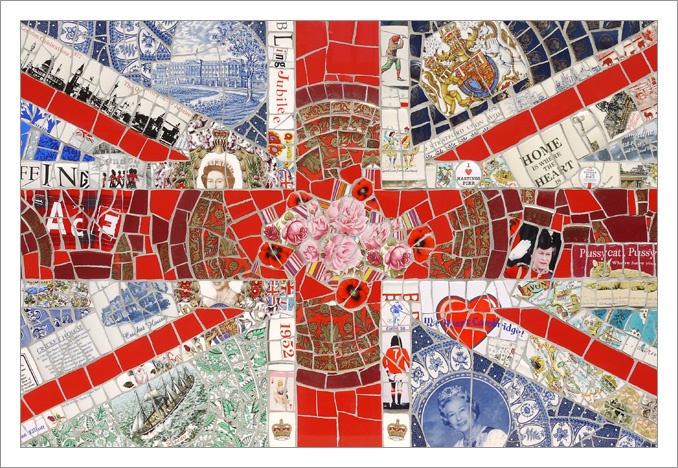
My first introduction to Punk Rock was on a Saturday evening. I was dressed up Annie Hall style (the flavour of the month), and one of my friends turned up in a black bin-liner, which had been torn to accommodate his pale skinny arms, ripped and pinned to hug the torso, atop tight black jeans and ex-soldier boots. He looked so crazy, and was so keyed up with excitement that inevitably we were not allowed into the club that night. It was 1977, we were just leaving school aged sixteen to go to art school and Punk Rock dragged me into its slipstream. It was to be a lasting influence on my work and the creativity of the country in the decades to come. The colour of punk is black: black eyeliner, black lipstick, and black nails, alongside tartan, orange spiked hair, and rainbow mohicans. The texture of punk is ripped and torn, screen printed t-shirts, fishnet tights, safety pins holding everything together or tearing through cheeks and eyebrows. The fabric of punk is plastic, leather jackets, mohair jumpers, Dr. Martens boots or brothel creepers and vintage lace ball gowns.
There were many sub-groups, school boy/girl, with torn white shirts and striped school ties, St Trinians’ style, safety pins holding together frayed edges, and bleached close-cropped razor-cut hair, or 1940s inspired outfits, big baggy granddad trousers, or tight pencil skirts with wide shouldered, nipped at the waist jackets and, of course, the occasional straitjacket/bondage-inspired outfit.
In art, the cut-and-paste, ransom-note, screen-print art of Jamie Reid’s record covers for the Sex Pistols and the rough and ready handmade fanzines of the time defined the decade and transformed graphic art up to the present day. The mix of anti-establishment, non-deferential style and politics that swept the country in a visual and auditory orgy of creativity has left its marks on artists such as Banksy, The Chapman Brothers, and the YBAs. Fashion designers look to Punk regularly when things need shaking up and Punk, through Vivienne Westwood, brought tartan out of the gloaming and into the sophisticated consciousness of the world.
In politics, Punk informs agitprop groups such as the female band and political agitators Pussy Riot, whose take on the uniform of punk helps to enforce their message. Filmmakers and authors use a punk character to portray the independent anarchistic outsider. Take ‘The Girl with The Dragon Tattoo’ as an example, and Danny Boyle using punk to sell the idea of Britishness to the rest of the world at the opening to the London Olympics. For better or worse, in this digital age anyone with a computer or smart device can say what they want, make music, make films, create images, and push them into the face of the rest of us, using the ‘do anything you want to do’ ethos of Punk.
Susan Elliott is an award winning Textile Designer. maugermodern.com
Courtesy of On|Off